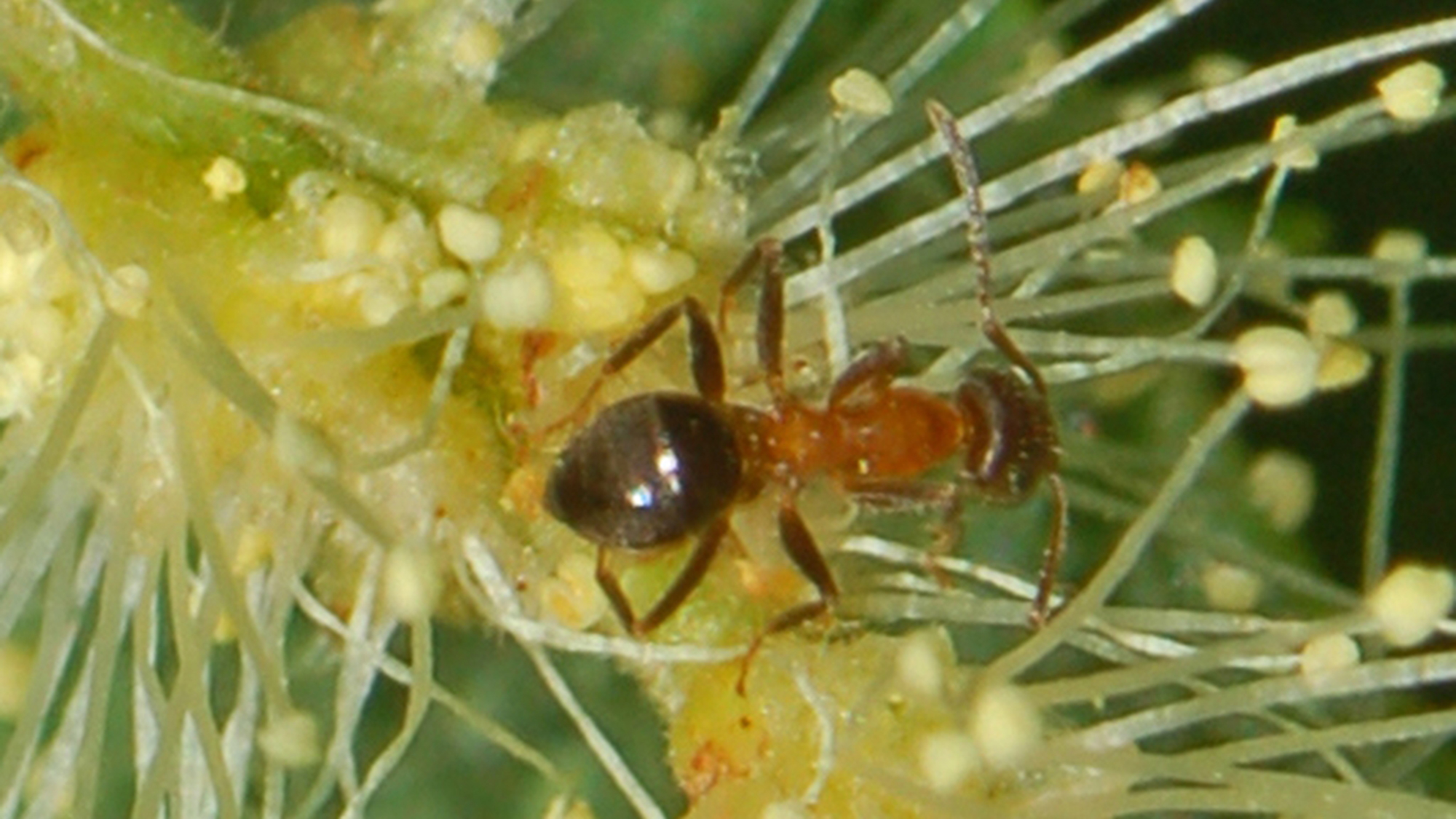What’s the weirdest thing you learned this week? Well, whatever it is, we promise you’ll have an even weirder answer if you listen to PopSci’s hit podcast. The Weirdest Thing I Learned This Week hits Apple, Spotify, YouTube, and everywhere else you listen to podcasts every-other Wednesday morning. It’s your new favorite source for the strangest science-adjacent facts, figures, and Wikipedia spirals the editors of Popular Science can muster. If you like the stories in this post, we guarantee you’ll love the show.
FACT: The “ManhattAnt” is taking NYC by storm—but it’s actually an immigrant
This story starts in 2011, when Rob Dunn, a biologist at North Carolina State University, was visiting to teach some classes at Columbia. Dunn now runs a group called the Public Science Lab, and he’s very into making “new discoveries about daily life, while engaging as many people as possible in the process of discovery.” You may have seen his name in the news before for his work on cataloging and studying the microbes involved in sourdough. So it’s not surprising that, while he was at Columbia, he decided to take some insect samples from the most pedestrian location he could find: the Broadway medians at 63rd and 76th streets.
As the New York Post reported in 2012, he found a surprising ant on the Upper West Side—it looked similar to many European species, but he couldn’t find an exact match. Some researchers speculated that it might have evolved in the isolation of the concrete jungle.
But it turns out this ant has an even more classic new york story: it’s an immigrant. Samantha Kennett, a PhD student at Clemson University in South Carolina, confirmed the ant’s identity once and for all as part of her master’s research. It’s an ant called Lasius emarginatus, which is a bit surprising—back in its native Europe, this species is known to favor forests and other rural areas. But in Manhattan—and now Brooklyn and New Jersey, too—Lasius emarginatus has been found scrambling up into high rises and thriving in Times Square flower planters.
If you listened to this week’s episode and came here looking for a video of a “pooter,” here you go.
FACT: A priceless artifact sat on a kitchen counter for years
In 1917, the third Imperial Faberge Egg was lost from public record. Then in 2004, it mysteriously showed up in a flea market in the Midwest United States. As it turned out, countless people either owned the egg or had an opportunity to, yet none of them noticed a secret detail inside the egg which would reveal its origin. Then in 2012, a man found a small detail within the egg that made him a multimillionaire. Join Jon Collins-Black on this week’s episode as he shares this incredible story and the moral of why it’s always important to pay attention to the details.
Those skills will come in handy if you want to find the actual hidden treasure that Jon has stashed around the United States! You can join the hunt by searching for clues in Jon’s new book, “There’s Treasure Inside.”
FACT: The color “electric blue” has a nuanced history
By Laura Baisis
A beloved shade of an almost universally well-liked color has both “good” and “bad” associations in sci-fi and real life. It has been linked with electricity and explosions as far back as the late 19th Century, right as electricity was on the verge of being harnessed for daily life. However, by the 20th Century it took a more positive turn. Blue is also a rare color in nature because how organisms absorb and reflect light is a bit complicated. Find out more about this color’s surprising history on this week’s episode!
